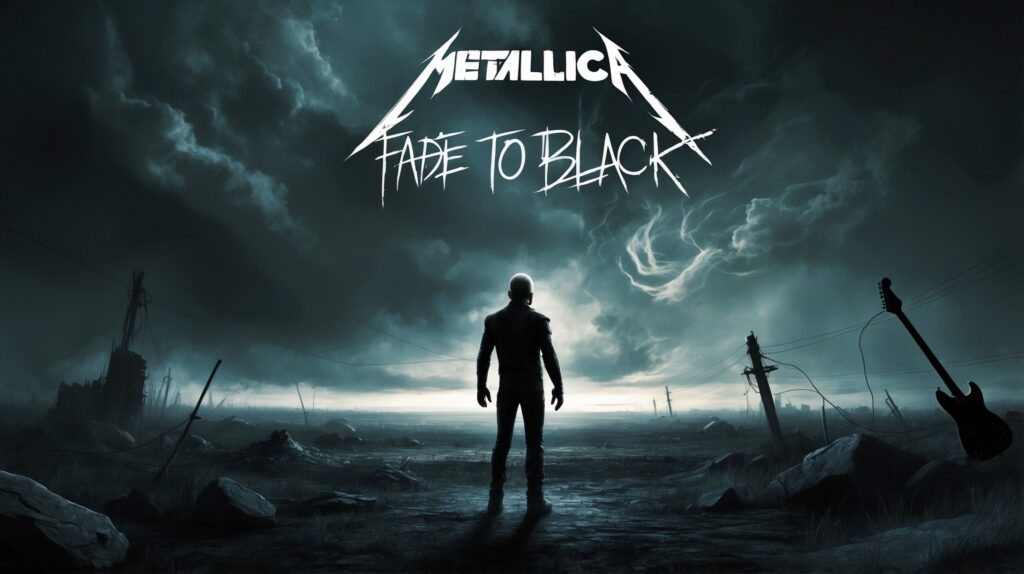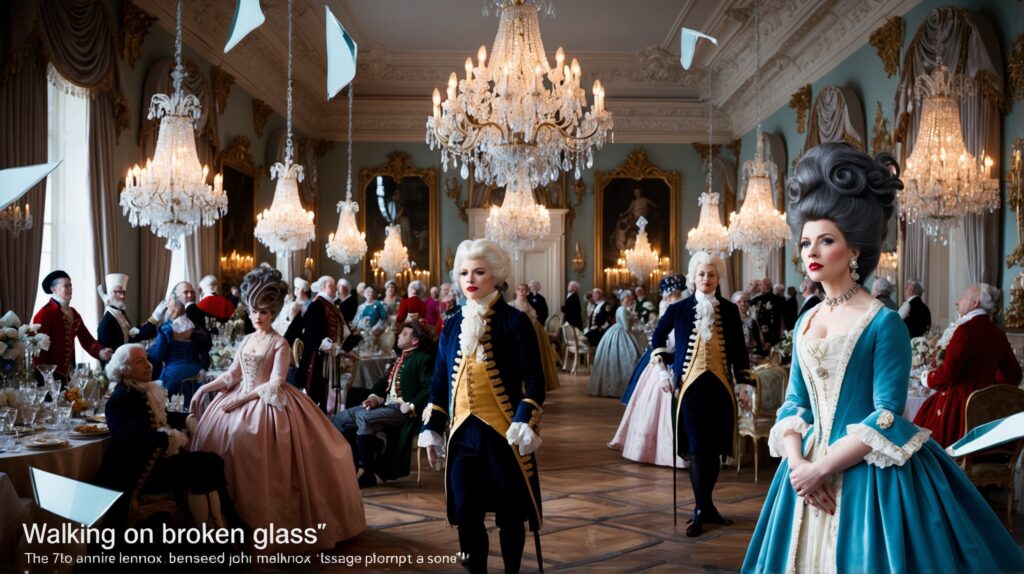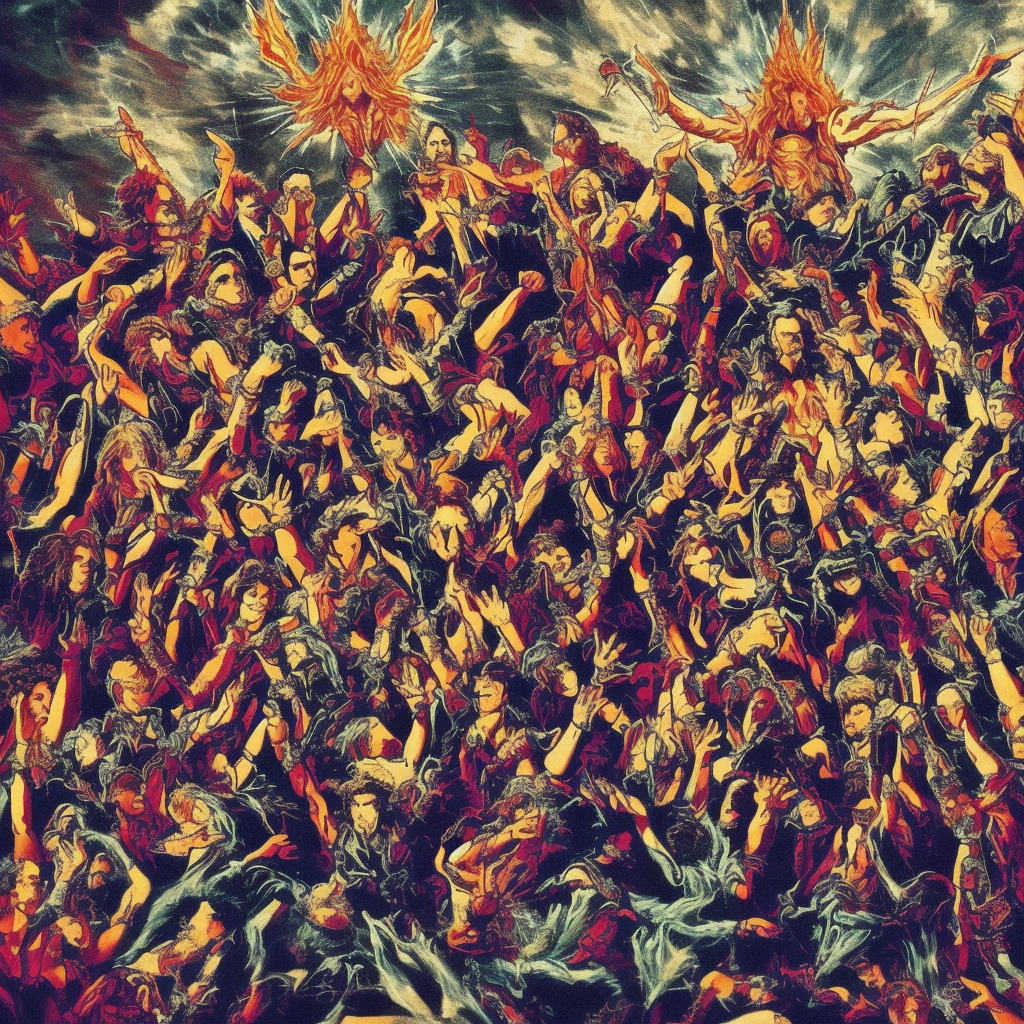Metallica: The Architects of Heavy Metal
Delve into the world of Metallica and the iconic track “Fade to Black,” which reflects the band’s groundbreaking approach to heavy metal and their relentless evolution in the music scene.
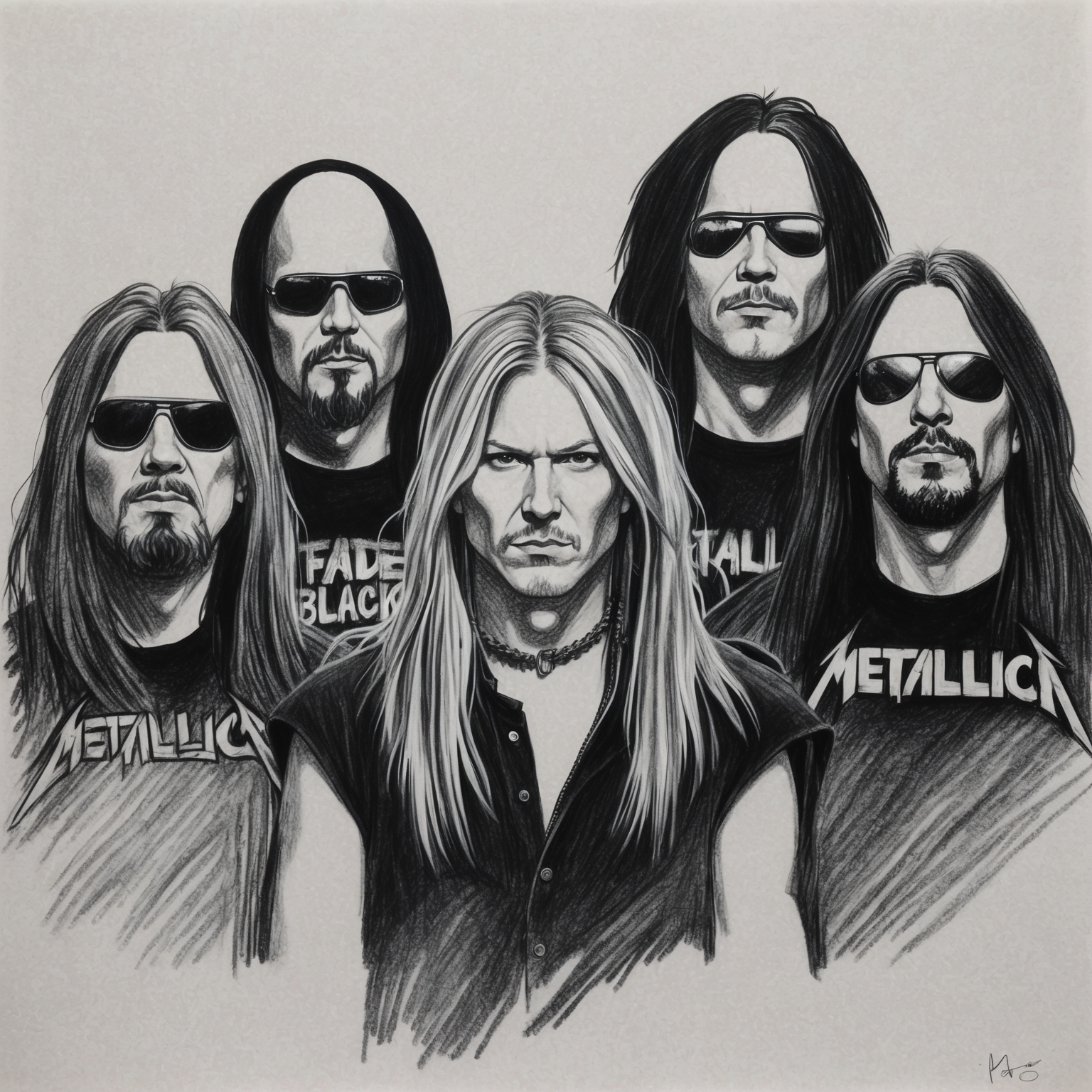
Metallica, a name synonymous with heavy metal, has carved out an indelible legacy that stretches over four decades. With the release of their trailblazing track “Fade to Black,” Metallica showcased their ability to weave intricate emotional narratives through the raw and powerful canvas of metal. This song marked a significant evolution in their journey, demonstrating not only their sonic versatility but also their willingness to explore darker, more introspective themes. At the time of its release, “Fade to Black” offered fans a poignant glimpse into the band’s expanding musical horizons.
The genesis of Metallica can be traced back to the early ’80s in Los Angeles, where drummer Lars Ulrich and guitarist/vocalist James Hetfield held a shared vision of creating intense and compelling music. Together with guitarist Kirk Hammett and bassist Cliff Burton, they formed the core of what would become a groundbreaking band. Influenced by the NWOBHM (New Wave of British Heavy Metal), Metallica’s early years were marked by a relentless drive to push the boundaries of genre through faster tempos and complex compositions.
The era surrounding the release of “Fade to Black” in 1984 was transformative for Metallica. Their sophomore album, “Ride the Lightning,” which features the iconic track, revealed a band that was maturing quickly both musically and thematically. During this time, Metallica also forged crucial collaborations that would influence their sound and style, establishing them as pioneers in the thrash metal scene. The song was initially received with mixed reactions due to its departure from their purely aggressive roots, but ultimately, it cemented Metallica’s place as innovators unafraid to venture into new emotional territories.
The Masterminds Behind ‘Fade To Black’
Uncover the profound influence of James Hetfield and Lars Ulrich, the creative forces behind Metallica’s ‘Fade To Black’, and explore their deep-seated musical roots and collaborative genius.
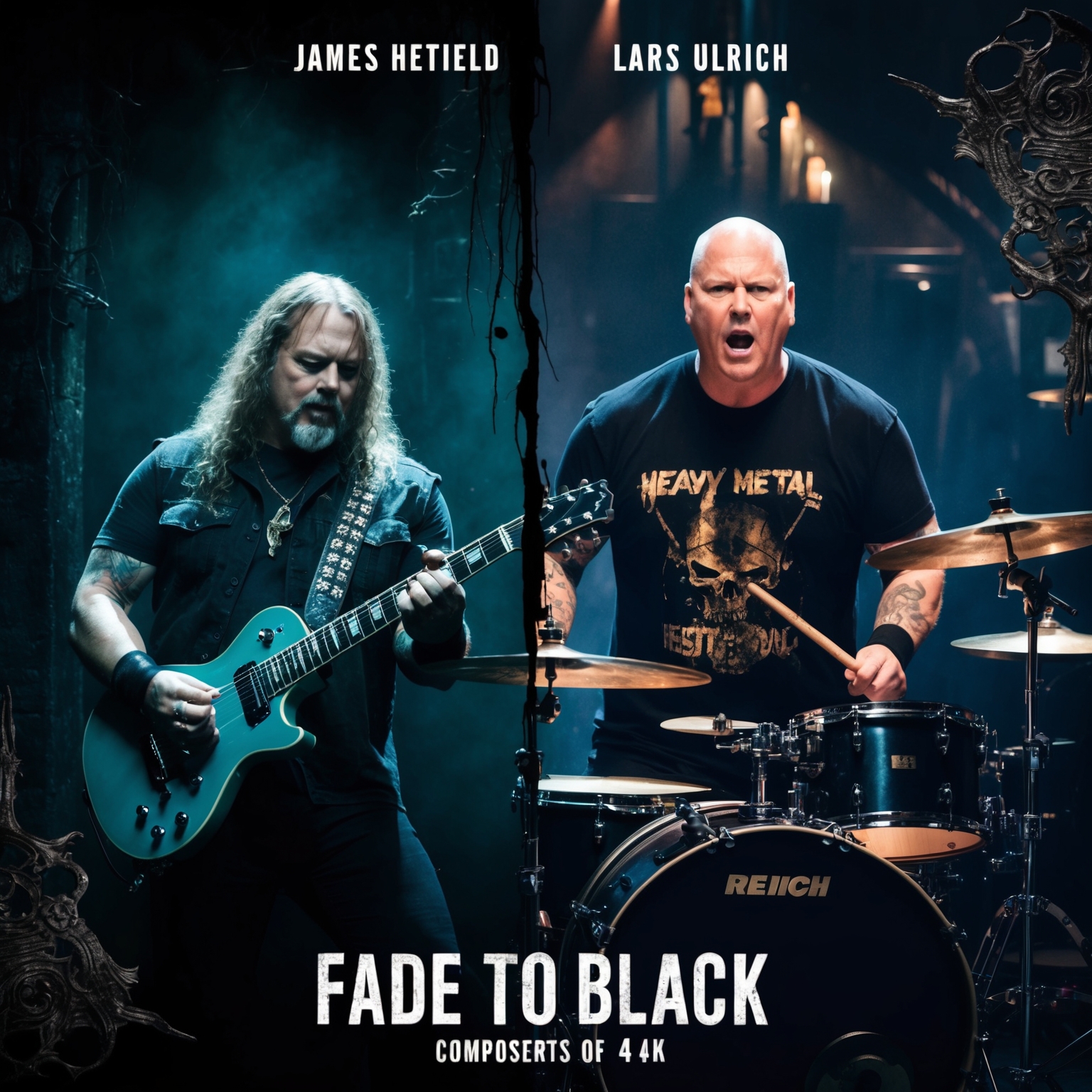
At the heart of Metallica’s profound and haunting track ‘Fade To Black’ lie the creative genius and raw emotions of its composers. James Hetfield and Lars Ulrich, the band’s core songwriters, were instrumental in bringing this introspective piece to life. Their ability to blend heavy metal with poignant and introspective themes has left an indelible mark on the genre.
James Hetfield, the band’s frontman, is renowned for his unparalleled skills in songwriting and composition. Born in 1963 in California, Hetfield’s journey into music was sparked by a diverse range of influences, from the heavy riffs of Led Zeppelin to the raw energy of punk rock bands. Over the years, Hetfield has honed a distinctive style characterized by emotionally charged lyrics and powerful guitar riffs. His contribution to ‘Fade To Black’ is deeply personal, as the song’s themes resonate with his own experiences of loss and yearning. This deeply emotional aspect of his composition not only molded the song’s somber atmosphere but also connected with listeners on a personal level.
Lars Ulrich, Metallica’s iconic drummer, is another pillar in the composition of ‘Fade To Black’. Born in Denmark in 1963, Ulrich’s love for music was evident from an early age, drawing inspiration from bands like Deep Purple and Black Sabbath. Ulrich is best known for his innovative drumming techniques and his knack for structuring songs with intricate rhythms. In ‘Fade To Black’, Ulrich’s drumming perfectly complements the song’s evolving mood, mirroring its shift from reflective to explosively aggressive. His collaboration with Hetfield is a testament to their seamless synergy, which has been a driving force in Metallica’s enduring success.
Exploring the Legacy: Awards, Covers, and Other Recognitions
Fade to Black may not have traditional awards, but its cultural impact is immense. From soundtracking intense moments in media to inspiring cover versions by notable artists, the song thrives on widespread recognition and respect.

Fade to Black by Metallica stands as one of the iconic tracks that has transcended its original release to become a staple in the genre of heavy metal. Despite its profound impact on music and culture, the song itself was not released as a single, and thereby it did not make its way through typical award circuits that singles usually navigate. However, the song’s lasting influence and recognition can’t be understated, especially considering its profound emotional and thematic depth.
While the song hasn’t been a major contender for traditional music awards such as Grammys, its accolades come in the form of enduring fan love and critical acclaim over the years. It frequently appears on lists that celebrate the greatest rock and metal songs, with many noting its powerful structure and emotive lyrics as key highlights. Furthermore, the track is heralded as a pioneer that shaped the introspective direction heavy metal can take, influencing countless bands and songs in the genre.
Another testament to the song’s lasting impact is the array of notable covers by various artists. Bands such as Machine Head and Apocalyptica have offered their renditions, letting Fade to Black transcend genres and generations. Each cover pays homage to the original while bringing unique interpretations, underlining the song’s versatility and timelessness. Moreover, the song’s themes of despair and introspection have transcended beyond the music arena into pop culture, highlighted by appearances in video games like Guitar Hero and in films and TV shows where its powerful ambiance is aptly utilized.
These reinterpretations and pop culture appearances further cement Fade to Black‘s status as a significant cultural artifact. Its influence reaches beyond its initial creation, carving out a legacy that’s celebrated not only by ardent fans but by the entertainment industry as a whole.
Chart Dynamics and Long-Term Resonance
“Fade to Black” may not have charted as a classic single, but its impact, cultural significance, and enduring popularity make it a success of a different kind. Integral to Metallica’s ‘Ride the Lightning’ album, the song has resonated deeply with fans and critics alike, showcasing Metallica’s range and artistic depth.
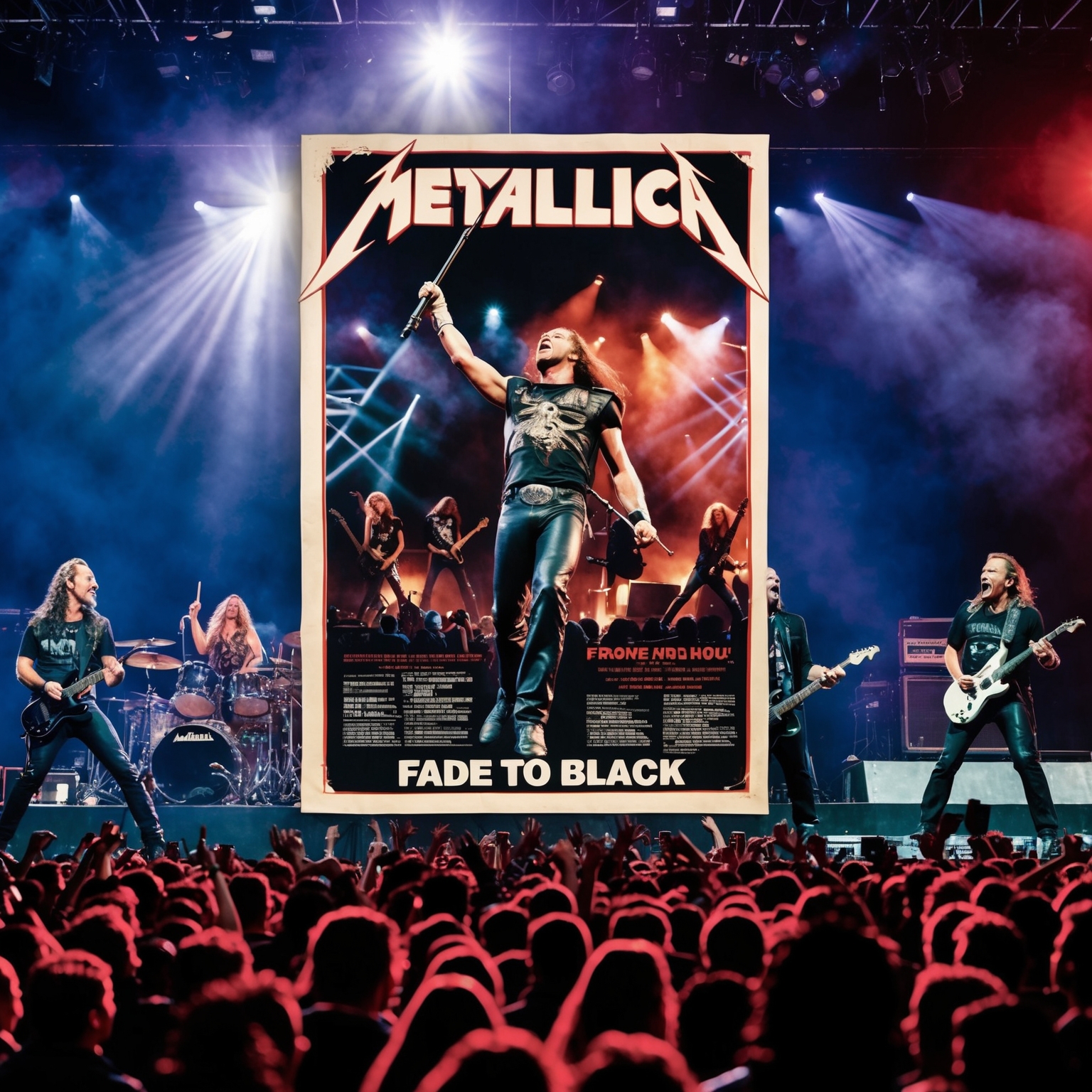
When discussing the chart success of Metallica’s iconic track “Fade to Black,” it’s essential to observe how it initially performed as well as its enduring impact over the years. Released on September 30, 1984, as part of their album ‘Ride the Lightning,’ “Fade to Black” wasn’t positioned as a single charting song. However, its presence on the album contributed significantly to Metallica’s burgeoning success during the mid-1980s. At a time when heavy metal was gaining widespread popularity, the song stood out, offering a poignant and emotional depth that resonated with fans globally.
Despite not charting as a single, “Fade to Black” has remained a staple in Metallica’s live performances, illustrating its perpetual appeal and demand. Unlike typical singles designed for radio play, the track forged its path through organic growth and word-of-mouth influence. This approach mirrored the band’s broader strategy for their second album, which saw consistent sales over time instead of a quick spike in chart placements. Such strategies were foundational in solidifying Metallica’s place in the heavy metal pantheon.
The cultural and critical reception of “Fade to Black” further underscores its success. While initial reactions were mixed, with some fans taken aback by its balladic style, it eventually became celebrated for its introspective lyrics and complex arrangements. Critics have lauded it for broadening the emotional range of heavy metal at a time when the genre was often pigeonholed as aggressive and one-dimensional. The song’s legacy persists as it continues to inspire countless artists across genres, lending credence to Metallica’s artistic audacity and their influence on music.
Exploring the Visual Journey of ‘Fade To Black’
Although ‘Fade To Black’ lacks an official music video, its compelling themes have inspired numerous fan creations and mesmerizing live performances, enhancing its timeless legacy.

Though ‘Fade To Black’ by Metallica was released in 1984, the era before music videos became the dominant promotional tool, its enduring impact can be seen in various fan-created videos and captivating live performances. The absence of an official music video has not diminished the song’s presence in the visual domain; rather, it has fueled the creativity of fans who resonate with its profound themes and emotive melodies. These fan-made videos often explore the song’s central themes of existential reflection and melancholy, translating them into powerful visual narratives.
Metallica’s live performances of ‘Fade To Black’ further elevate its evocative essence. The song is notorious for its ability to captivate live audiences, thanks to its soulful guitar solos and introspective lyrics. The band has incorporated dynamic lighting and stage effects to enhance its emotive depth during concerts, resulting in an immersive experience for concertgoers. These live versions often receive critical acclaim for their ability to connect emotionally with listeners, showcasing Metallica’s flair for live storytelling.
The song’s visual exploration has not only kept ‘Fade To Black’ relevant in the digital age but also contributed to its popularity. Each fan interpretation and live performance acts as a testament to the song’s timeless appeal. They underscore how ‘Fade To Black’ has carved a unique niche in Metallica’s repertoire, endearing itself to both old and new generations.
The Intricate Tapestry of ‘Fade to Black’: Musical Structure and Legacy
Explore the intricate musical structure of Metallica’s ‘Fade to Black,’ a composition that marries haunting melodies with dynamic rhythms, marking a significant evolution in the band’s discography.
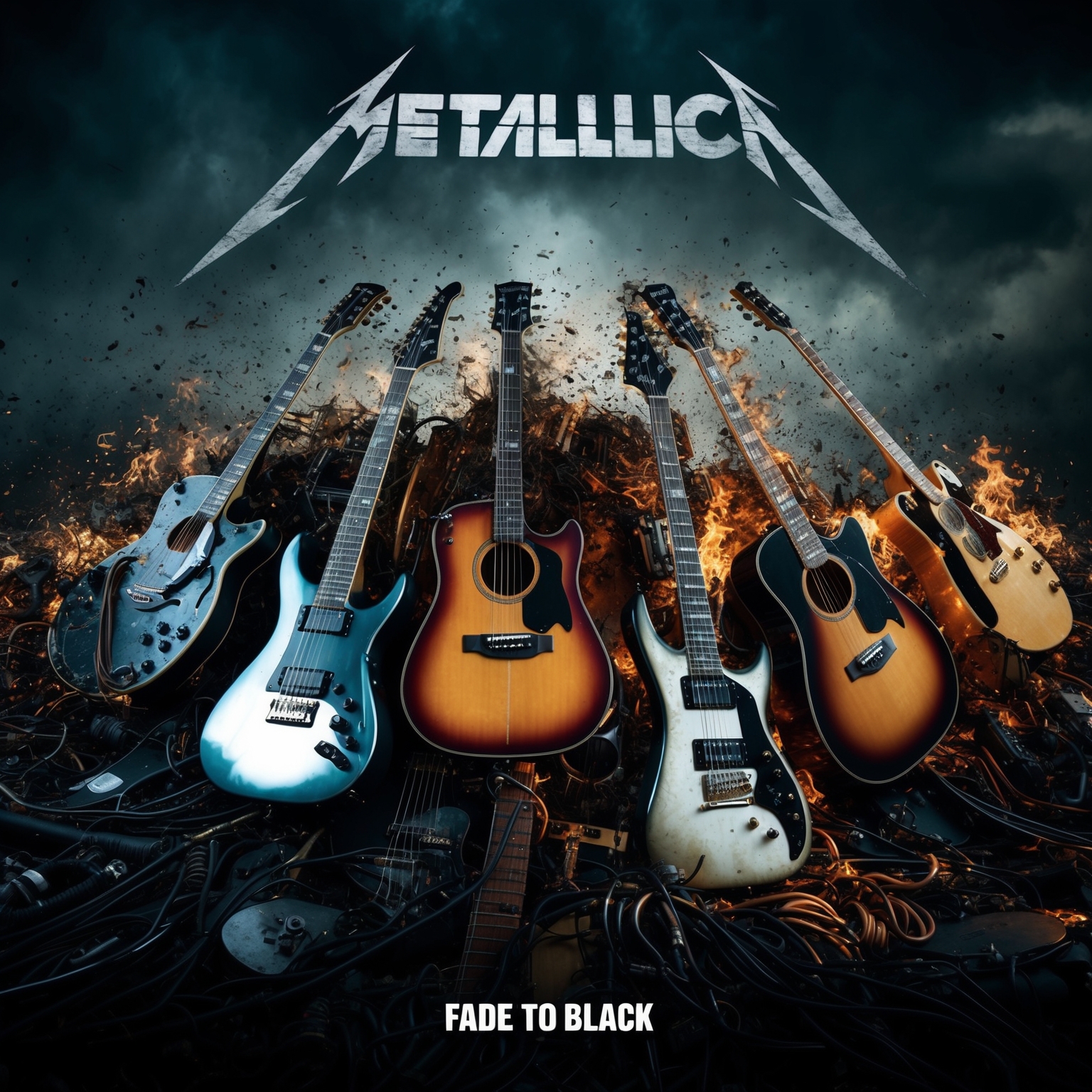
‘Fade to Black,’ widely regarded as one of Metallica’s seminal works, is a masterful composition that intricately weaves haunting melodies with powerful dynamics. This track, written in the key of B minor, is structured to evoke a deep sense of introspection and melancholy. Opening with an acoustic guitar arrangement, the song gradually builds intensity, culminating in a climactic yet poignant electric guitar solo that has become iconic in its own right.
Tempo-wise, ‘Fade to Black’ operates at a moderate pace, which effectively allows each musical element to resonate with the listener. It utilizes a combination of slow and fast tempo segments to mirror its lyrical journey from despair to a haunting resolution. The chord progression, characterized by both minor and major shifts, subtly augments the emotional depth of the song, providing a seamless narrative flow throughout its various stages.
The instrumentation in ‘Fade to Black’ deserves particular attention. Metallica achieves its unique soundscape through a blend of acoustic and electric guitars, bass, and dynamic drumming, layered in such a way as to produce both harmony and contrast. This blend underscores the band’s ability to transcend traditional metal boundaries, offering a ballad that is rich in both melody and emotional resonance. When viewed in the broader context of Metallica’s discography, ‘Fade to Black’ marks a distinct evolution from their earlier, rawer works and foreshadows the thematic complexity and musical sophistication that would characterize their later albums. The production, helmed by Flemming Rasmussen at Sweet Silence Studios in Copenhagen, carried anecdotes of experimentation and collaboration, reflecting a pivotal moment in Metallica’s artistic journey.
Delving Into the Introspective Depths of ‘Fade To Black’
Explore the introspective and profound lyrics of ‘Fade To Black’, which convey themes of despair and existential crisis, resonating deeply with Metallica fans.
Drifting further, every day
Getting lost within myself
Nothing matters, no one else
I have lost the will to live
Simply nothing more to give
There is nothing more for me
Need the end to set me free
Things not what they used to be
…
******* This Lyrics is NOT for Commercial use *******
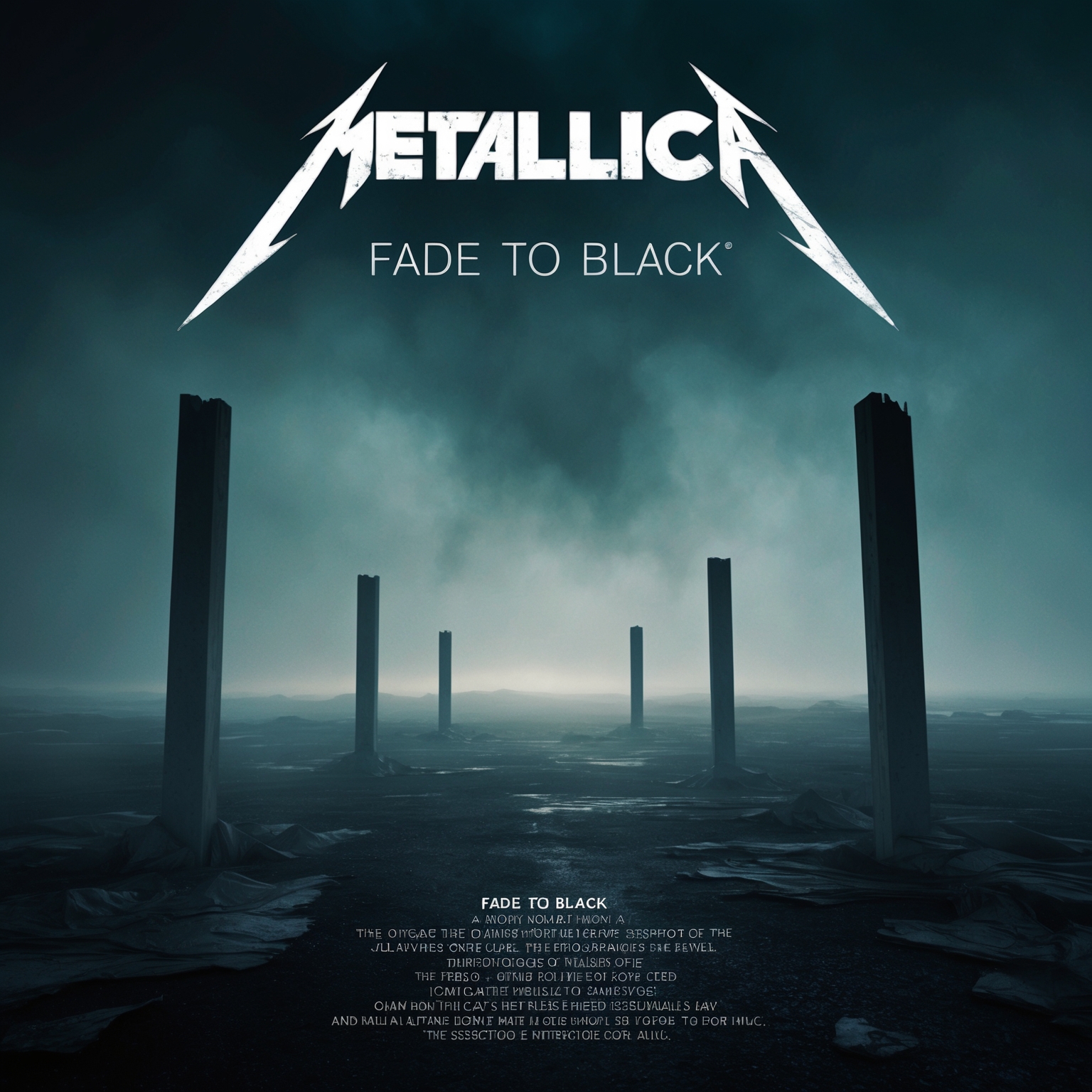 Metallica’s ‘Fade To Black’ stands as one of the most introspective and deeply emotional tracks in their discography. Released during a transitional period in the band’s career, the lyrics of this song explore themes of depression and existential crisis, resonating with listeners who have experienced similar emotional turbulence. The lyrics, primarily personal in nature, capture the essence of despair and the search for solace in the face of internal battles. The sombre phrases eloquently portray a sense of drifting and isolation that could be seen as reflecting the broader mood of the era when it was released in 1984, with rising societal pressures and personal uncertainties.
Metallica’s ‘Fade To Black’ stands as one of the most introspective and deeply emotional tracks in their discography. Released during a transitional period in the band’s career, the lyrics of this song explore themes of depression and existential crisis, resonating with listeners who have experienced similar emotional turbulence. The lyrics, primarily personal in nature, capture the essence of despair and the search for solace in the face of internal battles. The sombre phrases eloquently portray a sense of drifting and isolation that could be seen as reflecting the broader mood of the era when it was released in 1984, with rising societal pressures and personal uncertainties.
The narrative of ‘Fade To Black’ is woven in a first-person perspective, allowing audiences to intimately connect with the protagonist’s journey. The song effectively employs literary devices such as metaphors and similes to enhance its storytelling. The opening lines, “Life, it seems, will fade away,” suggest a poignant realization of life’s fleeting nature. This use of metaphor not only deepens the emotional gravity of the lyrics but also vividly paints the picture of the protagonist’s mental state. Such techniques contribute to the overall impact of the song, making it a powerful narrative of an individual’s struggle with depression.
Comparatively, ‘Fade To Black’ sets itself apart within Metallica’s catalogue through its profound existential themes. While their earlier works were heavily aggressive, this song’s introspective nature was a departure that demonstrated the band’s ability to tackle a range of emotional spectrums. The lyrical content, with its stark and honest depiction of despair, resonated deeply with fans, making it a beloved track that continues to evoke strong emotional reactions decades after its release. This ability to channel raw emotion into lyrically rich content helped cement Metallica’s reputation as artists capable of transcending mere musical boundaries to engage deeply with their audience.
Did you know? 🎸 Fade to Black was Metallica’s first ballad, blending introspection with heavy riffs! 🎶 Dive deep into #Metallica magic! 🤘#MusicTrivia #RockOn https://bit.ly/3NVTZ5W
Click to Tweet

